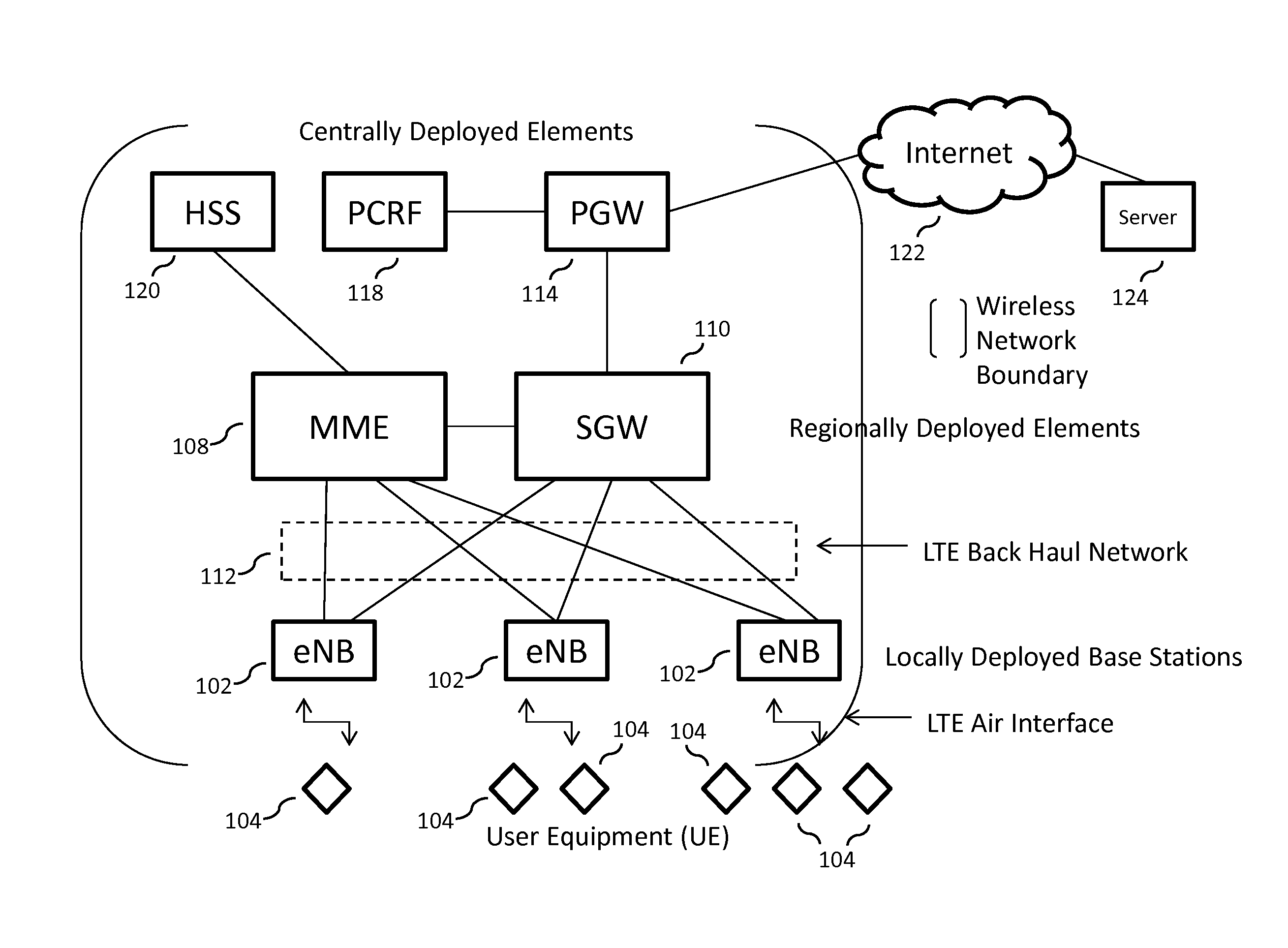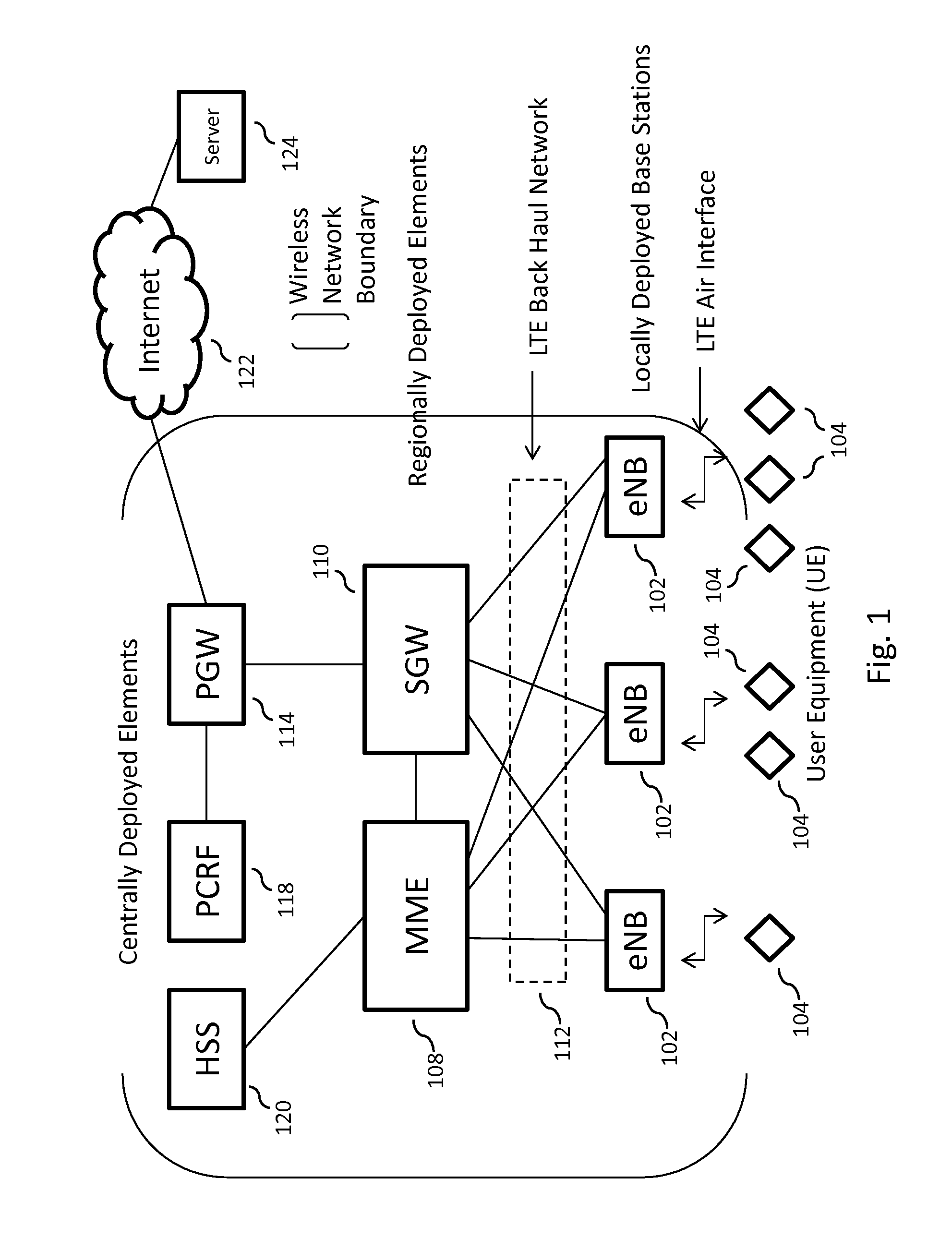Optimized broadband wireless network performance through base station application server
a wireless network and application server technology, applied in the field of broadband networks, can solve the problems of not meeting the current and expected bandwidth demands of users, difficult to meet these user demands, and high data rates and increased capacity offered by 3g and 4g networks, so as to reduce the time-latency of applications, reduce the utilization of wireless back haul networks, and reduce the latency of applications
- Summary
- Abstract
- Description
- Claims
- Application Information
AI Technical Summary
Benefits of technology
Problems solved by technology
Method used
Image
Examples
Embodiment Construction
[0088]The following is a written description of the present disclosure, and of the manner and process of making and using it, in such full, clear, concise, and exact terms as to enable any person skilled in the art to which it pertains, or with which it is most nearly connected, to make and use the same, and sets forth the best mode contemplated by the inventors of carrying out the disclosure.
[0089]The present disclosure is related to a broadband wireless network, more specifically, to a multi-purpose network, alternatively referred to in this disclosure as an “All Purpose Network” or “APN,” that is capable of implementing a large scale (e.g., national) broadband wireless network to provide a very high wireless data capacity, and is capable of resolving all the issues described above. The APN may combine proven leading edge commercial wireless design and architecture methodologies with advanced RF technologies to substantially improve spectrum efficiency, spectrum usage, and data pe...
PUM
 Login to View More
Login to View More Abstract
Description
Claims
Application Information
 Login to View More
Login to View More - R&D
- Intellectual Property
- Life Sciences
- Materials
- Tech Scout
- Unparalleled Data Quality
- Higher Quality Content
- 60% Fewer Hallucinations
Browse by: Latest US Patents, China's latest patents, Technical Efficacy Thesaurus, Application Domain, Technology Topic, Popular Technical Reports.
© 2025 PatSnap. All rights reserved.Legal|Privacy policy|Modern Slavery Act Transparency Statement|Sitemap|About US| Contact US: help@patsnap.com



